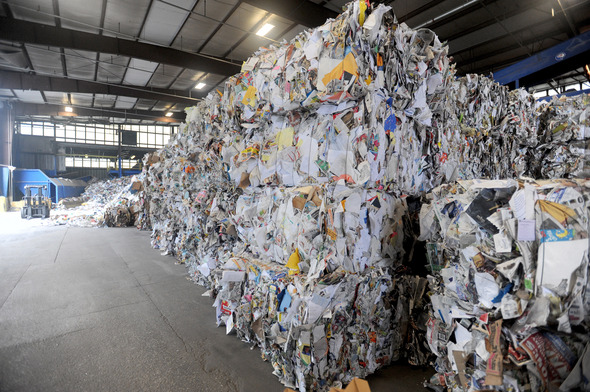
BioEnergy Consult: Concept of Zero Waste and Role of MRFs
Communities across the world are grappling with waste management issues. A consensus is emerging worldwide that the ultimate way to deal with waste is to eliminate it. The concept of Zero Waste encourages the redesign of resource life cycles so that all products are reused, thereby systematically avoiding and eliminating the volume and toxicity of waste and materials.
The philosophy of Zero Waste strives to ensure that products are designed to be repaired, refurbished, re-manufactured and generally reused. Among key zero waste facilities are material recovery facilities, composting plants, reuse facilities, wastewater/biosolids plants, etc.
Material recovery facilities (MRFs) are an essential part of a zero waste management program as it receives separates and prepares recyclable materials for marketing to end-user manufacturers. The main function of the MRF is to maximize the quantity of recyclables processed while producing materials that will generate the highest possible revenues in the market. MRFs can also process wastes into a feedstock for biological conversion through composting and anaerobic digestion.
A materials recovery facility accepts materials, whether source separated or mixed, and separates, processes and stores them for later use as raw materials for remanufacturing and reprocessing. MRFs serve as an intermediate processing step between the collection of recyclable materials from waste generators and the sale of recyclable materials to markets for use in making new products.
There are basically four components of a typical MRF: sorting, processing, storage, and load-out. Any facility design plan should accommodate all these activities which promote the efficient and effective operation of a recycling program. MRFs may be publicly owned and operated, publicly owned and privately operated, or privately owned and operated.
There are two types of MRFs – dirty and clean. A dirty MRF receives mixed waste material that requires labor intense sorting activities to separate recyclables from the mixed wastes. A clean MRF accepts recyclable materials that have already been separated from the components in municipal solid waste (MSW) that are not recyclable. A clean MRF reduces the potential for material contamination.
A typical Zero Waste MRF (ZWMRF) may include three-stream waste collection infrastructure, resource recovery center, reuse/recycling, residual waste management facility, and education centers.
The primary objective of all MRFs is to produce clean and pure recyclable materials so as to ensure that the commodities produced are marketable and fetch the maximum price. Since waste streams vary in composition and volume from one place to another, an MRF should be designed specifically to meet the short and long-term waste management goals of that location. The real challenge for any MRF is to devise a recycling strategy whereby no residual waste stream is left behind.
The basic equipment used in MRFs are conveyors & material handling equipment to move material through the system, screening equipment to sort material by size, magnetic separation to remove ferrous metals, eddy current separation to remove non-ferrous metals, air classifiers to sort materials by density, optical sorting equipment to separate plastics or glass by material composition, and baling equipment to prepare recovered material for the market. Other specialized equipment such as bag breakers, shredders and sink-float tanks can also be specified as required by the application.
